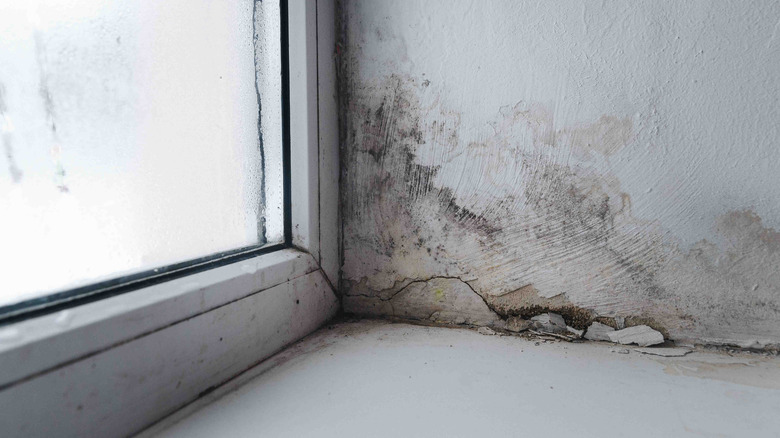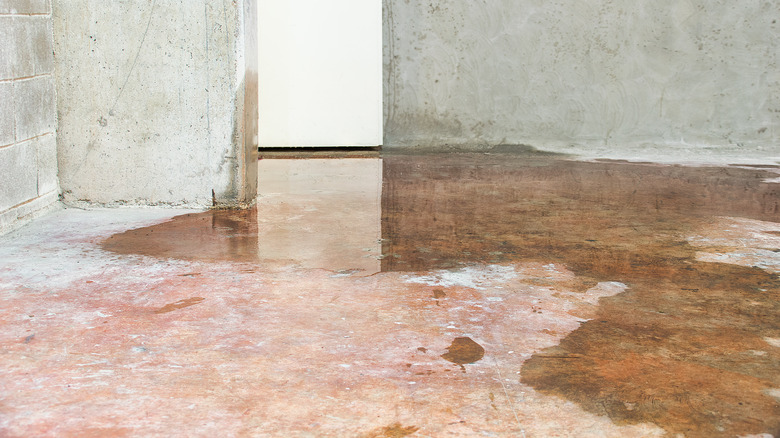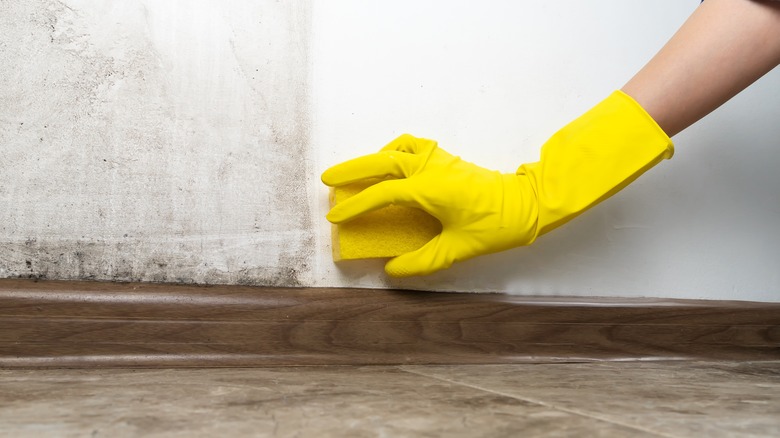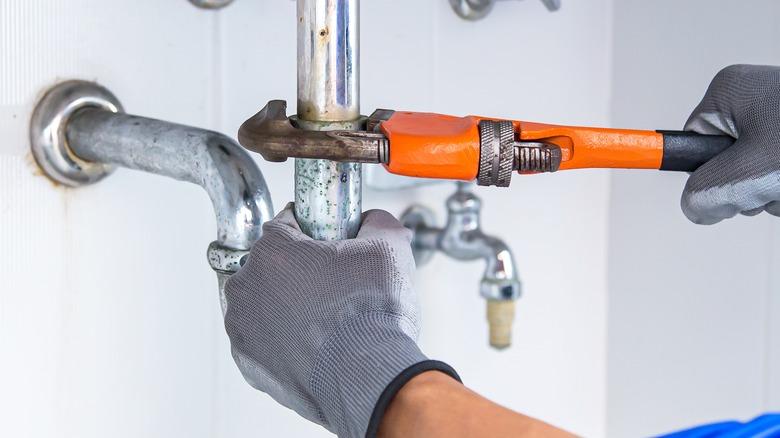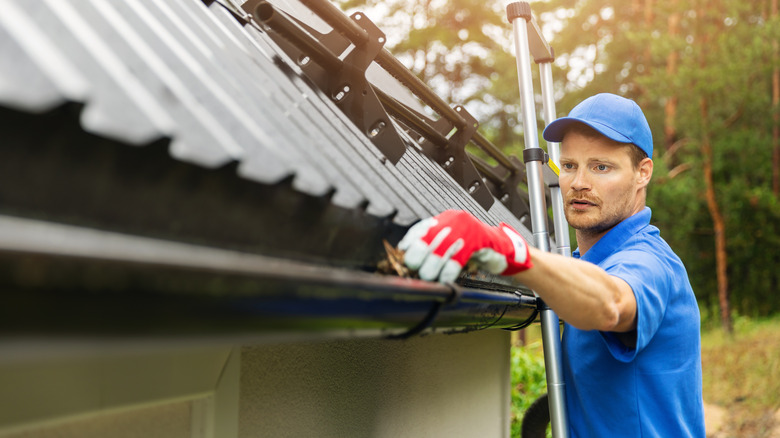Expert Outlines How To Banish The Mold In Your Basement For Good
There are several mold-removing hacks scattered across the internet, but it can be hard to decipher which are legitimate and which are just clickbait. So, we've turned to an expert to reveal advice we can trust.
Dale Granbois, the founder of Zablocki Waterproofing of Milwaukee, has used his experience to offer some insight. For more than 30 years, Granbois has helped homeowners limit the amount of moisture in their basements through a multitude of methods. Now, in an exclusive interview with House Digest, he's teaching you how to identify the problem and take the steps necessary to ensure it doesn't come back. "When you notice a damp, musty smell in your basement, it's likely that there is mold present," Granbois noted. And it's not just an issue of the senses; he warns that it "can cause serious health problems if left unchecked." This may include watery eyes, sneezing, skin irritation, difficulty breathing, and more. If left untreated, mold can also cause harsh allergic reactions. Here's how to get it out and keep it out of your living spaces.
The usual suspects
If you notice moist air in your home, this may be what is causing your fungal issue. "The most common cause of mold growth in basements is high humidity levels," Dale Granbois said. "Those above 50% provide ideal conditions for mold spores to take hold and thrive." High humidity can be caused by a variety of issues. "Spores can find their way into your basement through leaks or cracks in the foundation, as well as from moisture that rises through the ground from outside sources such as rain runoff or groundwater seepage," he explained.
"Other causes include poor air circulation, inadequate insulation, water overheating systems, failing sump pumps, lack of window wells, or ground grading causing water to pool near the foundation," Granbois said. And even mundane chores can end up being the culprit. "Surprisingly, some household activities can also increase the amount of moisture in the air such as drying clothes indoors or taking regular hot showers."
Get rid of all the existing mold
After identifying which issue (or issues) are causing mold growth, it's time to roll up your sleeves and get to cleaning. "To get rid of any existing mold, use a mixture of water and detergent to scrub away as much as possible," Dale Granbois said. "We suggest a plastic brush for scrubbing." There are other methods, however, for those who need something stronger. "If the problem is severe, consider using an antimicrobial cleaner specifically designed for mold removal," he explained. "The brush or sponge you use to scrub the mold should be discarded after each use."
Before getting to work, you should be aware of safety precautions. "Be sure to wear protective gear like gloves and goggles while cleaning," he said. "Also, if you are using a wet/dry vacuum, make sure to use a HEPA filter vacuum to remove any remaining spores from surfaces and the air." If mold happens to touch your bare skin, it could activate an allergic reaction that can cause a rash to form, and air filters will trap particles from resurfacing. These measures will ensure you get the job done without incident.
Keys to stop mold from returning
After spending so much time scrubbing the mold away, it's time to shift your focus back to ensure this doesn't become a continuous issue. "Now that you know what is causing the problem, how do you get rid of it?" Dale Granbois asks. "First things first: Reduce the amount of moisture by improving ventilation throughout your basement as much as possible. Open windows when the weather allows and install fans to keep air moving (especially after showering)."
Next on your list is to check and repair utility malfunctions around your home that are causing mold growth. "Make sure any appliances are correctly vented away from your home and have any plumbing issues addressed quickly — even a slow leak can be enough to cause large amounts of mold growth over time," he warned. "It may also be worthwhile investing in an effective dehumidifier to remove moisture from the environment faster than natural methods alone would allow."
Prevention is always better than a cure
Of course, the best thing to do is avoid the problem in the first place — and even if you don't have a current mold problem, there are steps you should be taking. "Check for any potential points where water could enter your home, such as cracks or chips in bricks/concrete walls/floors; repair and replace them before they become larger problems later on," Granbois said. Other types of residential upkeep you may sometimes push aside should also be monitored. "Make sure all gutters are clean and clear with no blockages," he explained. "This will help ensure no standing water accumulates outside near your home's foundation walls — a major source of mold development inside homes every year."
Mold can occur in unexpected places, so "keep an eye out inside too," he noted. "While not as common, incidence-wise, mold still happens. Look for signs like discoloration or staining on surfaces or wallpapers peeling off easily. If seen, act fast before things worsen."
